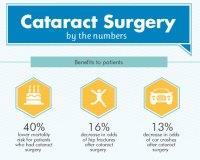A Relative Research Study Of Typical Cataract Surgical Procedure And Laser-Assisted Strategies: Benefits And Limitations
A Relative Research Study Of Typical Cataract Surgical Procedure And Laser-Assisted Strategies: Benefits And Limitations
Blog Article
Created By-Schack Kure
When contemplating the option in between conventional cataract surgical procedure and laser-assisted methods, you might find yourself evaluating the advantages and drawbacks each method supplies. The choice goes beyond the surface area degree of cost and accuracy, delving into the realm of long-term outcomes and individual complete satisfaction. As you browse through the intricacies of these two strategies, it ends up being imperative to comprehend the nuanced details that can substantially impact your aesthetic clearness and overall experience. Remain tuned to uncover the essential factors that will certainly direct your decision-making procedure in this important element of eye treatment.
Conventional Cataract Surgical Procedure Benefits And Drawbacks
When taking into consideration traditional cataract surgical procedure, you may find that it's a well-established and widely-used strategy. In https://www.dovepress.com/single-step-transepithelial-photorefractive-keratectomy-in-low-to-mode-peer-reviewed-fulltext-article-OPTH , a surgeon makes a tiny incision in the eye and uses ultrasound to separate the over cast lens before removing it. When the cataract is eliminated, a man-made lens is put to restore clear vision.
One of the major benefits of conventional cataract surgery is its track record of success. Many patients have had their vision significantly improved via this procedure. In addition, traditional surgery is typically covered by insurance, making it a much more available alternative for lots of people.
Nonetheless, there are some drawbacks to typical cataract surgical treatment as well. Healing time can be much longer contrasted to newer strategies, and there's a somewhat higher threat of complications such as infection or inflammation. Some patients may likewise experience astigmatism or require analysis glasses post-surgery.
Laser-Assisted Techniques Benefits And Drawbacks
Exploring laser-assisted techniques for cataract surgical treatment reveals a modern-day method that uses laser modern technology to do essential action in the procedure. One of the key benefits of laser-assisted cataract surgical treatment is its accuracy. The laser allows for exceptionally accurate lacerations, which can bring about far better aesthetic outcomes. Furthermore, using lasers can decrease the amount of ultrasound energy needed throughout the surgical procedure, potentially lowering the danger of problems such as corneal damage.
On the disadvantage, laser-assisted strategies can be a lot more costly contrasted to standard methods. This price mightn't be covered by insurance, making it much less available to some clients.
Another factor to consider is that not all cataract surgeons are trained in laser technology, which can limit your options for picking a cosmetic surgeon.
Finally, while the laser can automate specific elements of the procedure, the surgical treatment still calls for a knowledgeable surgeon to make sure effective outcomes.
Comparative Analysis of Both Techniques
For a comprehensive understanding of cataract surgery techniques, it's necessary to conduct a comparative evaluation of both traditional and laser-assisted techniques.
Standard cataract surgical procedure entails hand-operated cuts and the use of handheld tools to break up and get rid of the cloudy lens.
On https://www.healio.com/news/ophthalmology/20210608/cosmetic-keratopigmentation-shows-longterm-efficacy-satisfaction , laser-assisted cataract surgical treatment uses advanced technology to create accurate incisions and break up the cataract with laser power before removing it.
In regards to accuracy, laser-assisted strategies provide a higher level of precision contrasted to standard techniques. Making use of lasers allows for personalization of the treatment based upon each patient's eye composition, possibly leading to far better aesthetic end results.
Nevertheless, laser-assisted cataract surgical treatment often tends to be extra costly than standard surgery, which may limit availability for some people.
While both approaches are effective in restoring vision impaired by cataracts, the choice between traditional and laser-assisted methods often relies on factors such as expense, precision, and private client demands.
Consulting with your ophthalmologist can help figure out one of the most ideal method for your cataract surgical treatment.
Verdict
In conclusion, when determining between standard cataract surgery and laser-assisted techniques, consider variables like cost, accuracy, and individual needs. Standard surgical treatment provides a proven track record and insurance coverage but might come with longer recovery times. Laser-assisted methods provide greater precision and personalization but can be much more pricey and not constantly covered by insurance coverage. Ultimately, the selection in between the two approaches depends on what is essential to you and your specific scenario.
